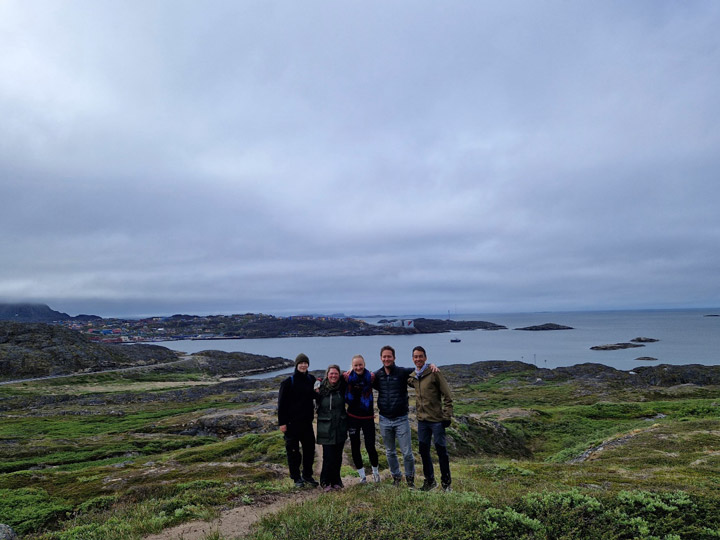A combined team from the University of Helsinki (Environmental Change Research Unit), the Finnish Meteorological Institute (Atmospheric Composition Unit), and the Vrije Universiteit Amsterdam (Climate & Ecosystems Change) was on its way again to gather groundbreaking data on carbon and aerosol emissions from increasing fires in the northern high latitudes. Our journey began in boreal Quebec and now continues to Arctic Greenland.

Climate change is warming the Arctic with partly unexpected consequences. In recent years, unprecedented wildfires have raged through Arctic permafrost terrain burning in 2019 and 2020 alone, an area equal to half of what burned in the previous 40 years. In Greenland, a land known for its icy expanse, fires are rare. However, in July and August 2019, the second-largest wildfire recorded on the island occurred at the Kangerluarsuk Tulleq, northeast of Sisimiut. To our knowledge, fire effects in Greenland have never been studied—until now, as we begin our investigation.

To estimate the carbon burned and greenhouse gases and aerosols released during tundra fires, we assess post-fire ecosystem effects. We measure the dominant ecosystem types within the fire scar and compare them with unburned areas. We evaluate fire severity, and we conduct various aboveground and belowground measurements to calculate and date carbon stores.
Our campaign aimed to efficiently use 29 hours at the destination by collecting samples from all major ecosystems within the fire scar. We arrived by boat (hiking from Sisimiut is also possible but would take 2 days) and spent the day sampling. We camped near the shore, with some of us taking a daring dip in the sea. We continued sampling the next day before returning to Sisimiut in the evening. The study area exemplified the Arctic steppe ecoregion, featuring fragmented ecosystems ranging from barren rocky slopes and drier fields dominated by moss and lichen to moderately wet peatlands. We successfully collected a diverse set of samples from various ecosystems for detailed lab experiments and analysis to be performed back in Finland.

As we were preparing to head home from Greenland, we encountered unexpected foggy weather, which led to flight cancellations for several days. This gave us a well-appreciated few extra days of adventure. Three of us packed our hiking gear and embarked on an overnight hike. The summit of the two mountains we climbed was unforgettable. A key lesson for traveling in Greenland: keep your schedule flexible—it’s worth it!
Overall, the field campaign was a unique, once-in-a-lifetime experience. But that’s not all—can you guess where the fiery journey of Granqvist and Diaz will take them next? Stay tuned!

The Greenland fire expedition was organized within the Research Council of Finland Academy Research Fellow project “Fire in the Arctic,” led by Meri Ruppel, and the Kone Foundation project FLARE. The fieldwork was also part of FireIce (Fire in the land of ice: climatic drivers & feedbacks), a Consolidator project funded by the European Research Council. FireIce is affiliated with NASA’s Arctic-Boreal Vulnerability Experiment (ABoVE). This blog post was written by Sonja Granqvist, a Ph.D. student at the University of Helsinki, studying Arctic-boreal fires in collaboration with the Climate & Ecosystems Change research group from the Vrije Universiteit Amsterdam.
Tags: ABoVE 2024, earth, FireIce, wildfire




Your enthusiasm and dedication to the work are an inspiration to all.
Have you taken core samples to see if there is evidence the area has burned in the past?
Hi Hugh,
Thanks for your interest! Yes, we did take soil/peat cores to check, for instance, for previous fires and the past vegetation succession at the wildfire site.
Hi Hugh, thank you for your question. Yes, we collected soil cores and will identify the past and present vegetation from those in more detail.